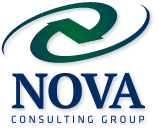Prospecting
Employing the amplifiers of social networks, email marketing, lead generation strategies, etc., are essential elements in today’s selling environment. Multiple channels of communication are what we recommend to all of our clients. Furthermore, multiple channels include prospecting calls through either the phone or starting an in-person conversation with a potential client.
Activity volume at the start of the sales process is vital to the organization’s sales pipeline health and revenue. Studies have shown that it takes 25 contacts to get 12 responses, resulting in 5 sales presentations and three closed sales. Indeed, 80% of salespeople who fail in 1st year do so due to insufficient prospecting.
Call Reluctance
In their groundbreaking study, George Dudley and Shannon Goodson found that the condition which limits a salesperson’s potential and restricts their ability to connect with potential clients comes from their fear of self-promotion. This condition keeps competent, hardworking, and worthy salespeople from succeeding. The fear of self-promotion shows up in salespeople as what Dudley and Goodson call Call Reluctance.
How to Overcome Call Reluctance
Origins of call reluctance often stem from early sales experiences that shape attitude and teach prospecting is a nuisance, an inescapable part of a sales career. Some sales managers never learned to overcome the problem, leading to misguided motivational speeches and threats.
Resolving call reluctance is a one-to-one effort – sales leader to a salesperson. Each person has their own profile, and a competent sales leader will take the time to understand the individual’s profile and work with them to recognize where they fit on the call reluctance spectrum and how to improve.
Takeaway
Call reluctance, like other misalignments, are not always obvious. Unresolved, your organization is. doomed to a sales “revolving door,” inefficiency, costs, lost revenue, and market standing.


